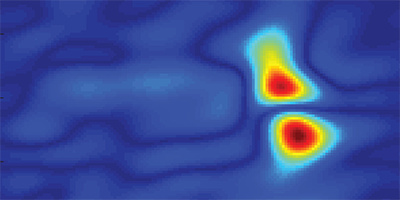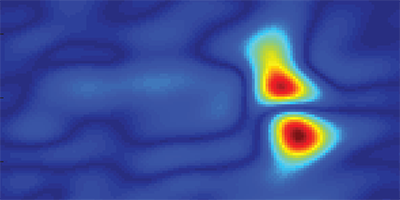Light Finds Tiny Defects
Electronic devices made of organic materials, from transistors to solar cells, are being manufactured in ever increasing volumes. A critical issue in their production is inspecting for contaminating particles or defects. These are often only tens of nanometers in size and therefore below the resolution limit of standard optical techniques, but higher-resolution methods, like electron microscopy, may not be practical for commercial purposes. Now, researchers in Paul Urbach’s group at Delft University of Technology in the Netherlands have shown how an optical scheme, based on wave interference effects, can be used to both detect and localize nanoscale defects. This technique can be used in real time on devices moving through a production line.
The scheme is based on detecting the interference of light reflected from a substrate and that scattered by the defect. The authors fired focused, radially polarized light from a blue [405 nanometer (nm)] laser onto a polished silicon wafer, artificially populated with 100-nm polystyrene spheres acting as defects. A CCD camera then collected the light reflected by the sample. Guided by calculations, Urbach and his collaborators showed that the setup acts like an interferometer, in which the light scattered by the defect and that emerging from the substrate strongly interfere thanks to their parallel polarizations. The mutual phase difference, which could be measured by changes in the interference pattern recorded by the camera, can be related to the defect’s position on the plane of the substrate. The demonstrated spatial resolution of this technique, 100 nm in the experiments, has no theoretical limit and is dictated only by experimental noise.
This research is published in Physical Review Letters.
–Katherine Kornei





